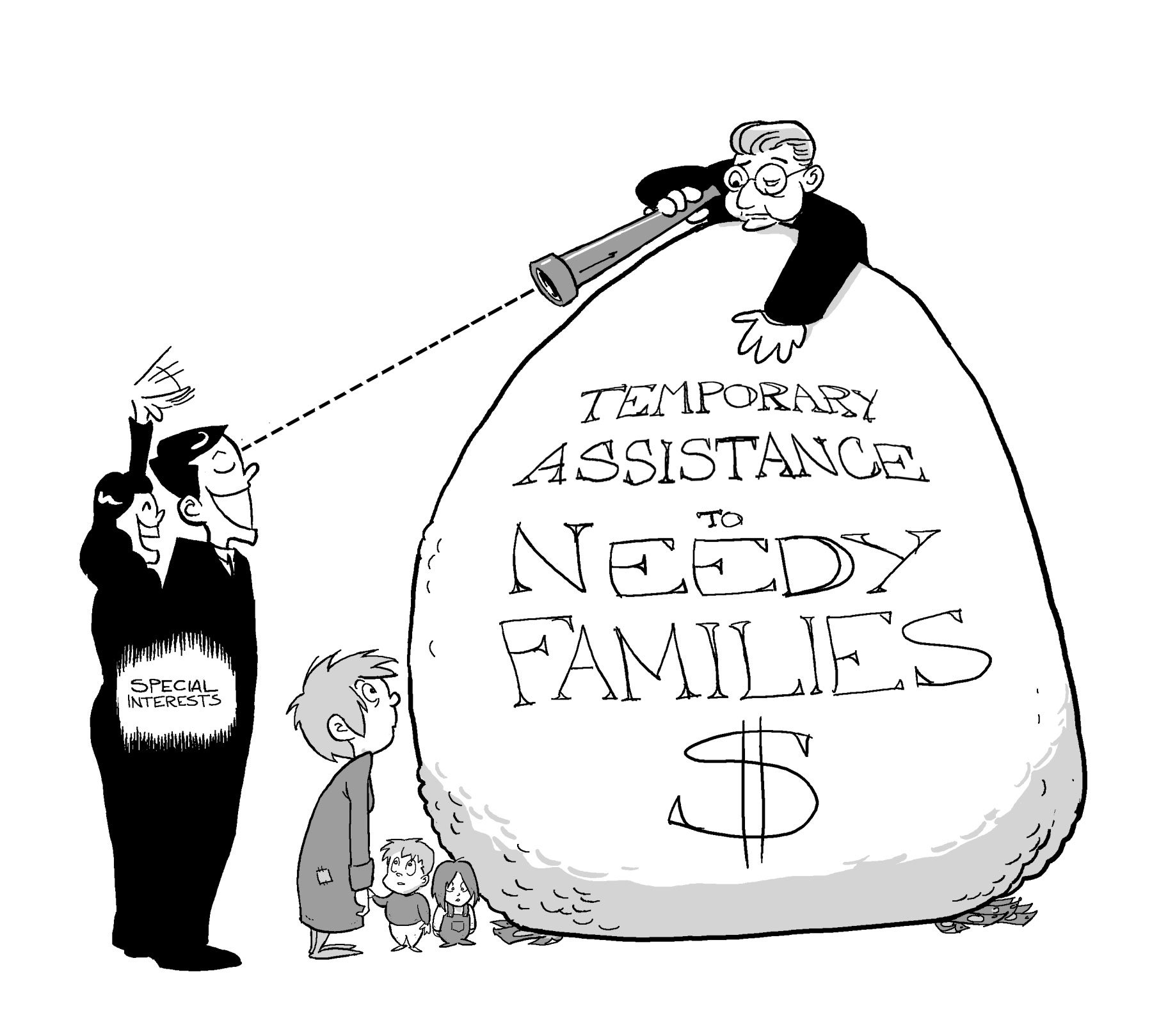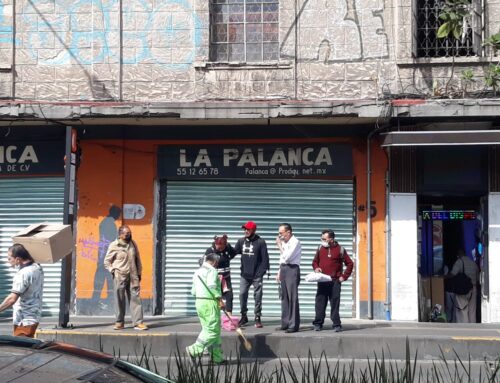Water is one thing people need. Money is another. 42% of Flint residents were living below the poverty line before governmental agencies caused the Flint water disaster. This is Flint’s second man made disaster. The first is its poverty, made worse by our national welfare program—known as Temporary Assistance for Needy Families (TANF)—and Michigan’s particularly stingy version of it.
Michigan’s welfare program enrolled only 82,471 of Michigan’s poor income eligible residents in 2014, though far more than that—about 1,585,000 Michigan adults and children—are living at or below the poverty line. Even accounting for some of these getting cash aid through other programs, the extremely low number of residents in poverty who actually receive any TANF or “welfare” is so low it raises questions of how such a low enrollment is possible when there is plainly so much need. Also, if you are one of the tiny number of people enrolled in Michigan’s welfare program, the most cash aid you get is $492 a month for a family of three. That is 29% of a poverty line income.
The Temporary Assistance for Needy Families program, commonly referred to as “welfare,” is given to each state each year in the form of a block grant. The state gets to decide how to use the money. The idea is that state legislators are the most knowledgeable about their poor residents and so best able to decide how to use the money. The block grant system began in 1996 when Bill Clinton signed a welfare reform bill into law, and he could not have done more damage to places like Flint if he had gone into homes and poisoned everyone himself.
Last year, Michigan accepted a welfare block grant of $816 million dollars, even though throughout the year it only enrolled such a small percentage of its people in need. Genessee County, where Flint is located, has about 86,000 of its 412,000 residents living in poverty. Yet only 8,523 individuals get any “welfare.”
When a poor mother or father applies for welfare, she is reminded that she has a “personal responsibility” to not take more aid than the family needs—and that if she does, she may go to jail. Yet every year, Michigan’s welfare bureaucrats (and those of other states) take way more than they are willing to spend to help their poor each year, and then keep the money to spend on other stuff. Despite a state poverty rate of 16%, Michigan’s TANF administrators:
- kept $118 million of its 2012 welfare block grant
- kept $42 million of the 2013 block grant
- kept $38 million of the 2014 block grant
Michigan’s state legislature and its governor did this even while knowing that they were giving TANF aid to only 20 out of every 100 poor families. And while knowing that 42% of Flint was living in poverty.
Michigan’s state welfare administrators have not managed its federal block grants responsibly. It is sheer idiocy to refuse to give cash to individuals in need on the grounds they might misuse it while allowing a state welfare program to withhold funds and spend the block grant meant for poor people on items other than alleviating poverty. The federal government must step in and demand that Michigan take all that money it kept, and use it now to provide a cash benefit to the people of Flint, to help them survive and buy enough clean water while the federal government steps in and fixes the water system.
Michigan must also be forced to immediately do away with its work requirements, which obligate parents on welfare, especially single ones, to participate in work and job training in Genessee County. The overwhelming priority in Flint right now is to free up community members from these “make work” activities so they can spend time with and take care of their now sick, lead-poisoned children, and help solve the crisis. Michigan’s state welfare plan is one of the meanest in the nation, requiring mothers to go to work or job training and “job search” once their child turns two months old (This goes against everything we know about the importance of talking to your baby, the importance of breastfeeding for at least six months, and attachment theory.) It is time to admit that this was a bad idea and reduce the work requirements to zero, so Flint’s parents can take care of the kids. While we’re at it, the same should be done in Detroit.
The governor and the state legislature should be made to raise Michigan’s monthly welfare benefit up to 100% of the poverty line, and expand the rolls to enroll all people poor enough to qualify. In Flint, there should be an immediate moratorium on case closings until the emergency is over, to prevent further harm to children.
Michigan should immediately be made to stop spending hundreds of millions of dollars in non-cash assistance and non-essential TANF categories like encouraging marriage. The state TANF program spent $127 million in 2014 on “prevention out of wedlock pregnancies,” and $29 million in the same year to convince poor women and men to marry, all while poor children were not only going hungry, but also being poisoned. It is wrong to spend this money on media campaigns, brochures, buttons, stickers, and “professional training materials” that promote marriage and discourage having children while families are going without their basic needs met in Flint.
Flint’s families need an income sufficient to meet their basic survival needs in order to overcome this man made disaster. Michigan has been using its federal welfare block grant for things other than cash assistance and to create a virtual slush fund for state use. An emergency like Flint’s is the perfect time to shine a light on how state management of federal TANF block grants diverts the money and perpetuates poverty, a man made disaster that has been poisoning us since 1996.







Leave A Comment